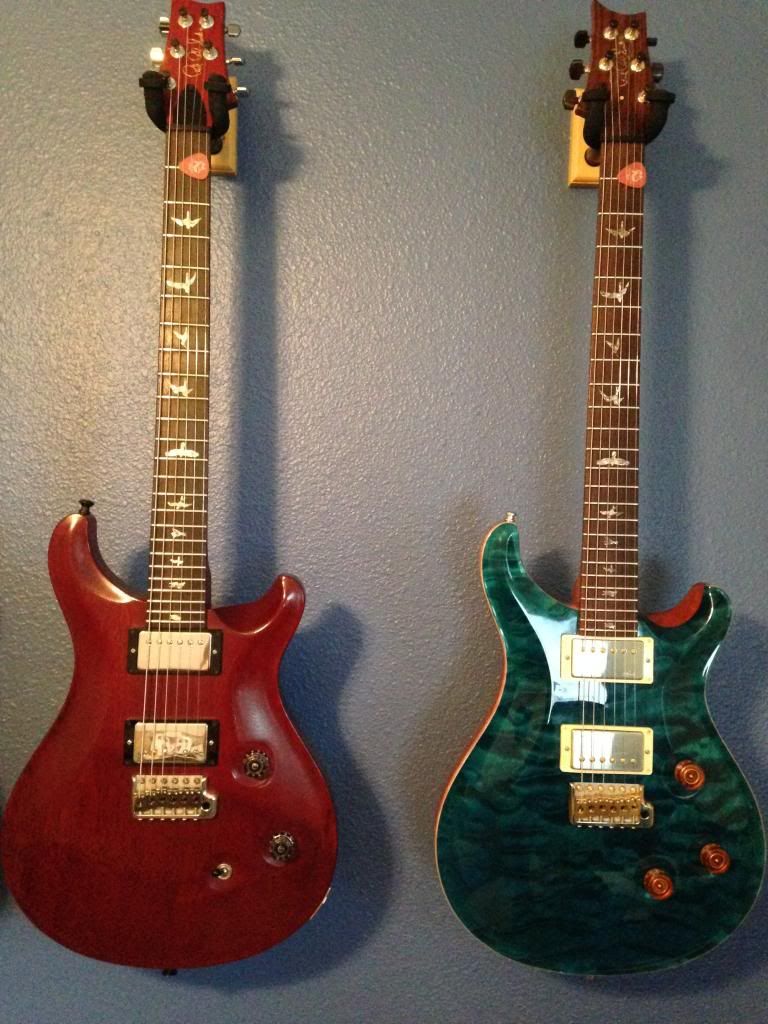Thanks all! I appreciate the input.
Catstrangler: Glad to hear it's working well practically for you! Also glad to hear about cleans, those are important to me.
LSchefman: That makes a lot of sense. I suppose I'm more wondering not so much about versatility in a yes/no sense, as much as in a contextual sense. I.e. Great examples listed, but I think the majority of what I'm interested in playing is a little more on a different end of the spectrum, one that typically contains a wider dynamic range, at least from what I understand. Hearing about your experiences does help though - so you do believe that it ends up being more of a "dialing" situation? I suppose what's thrown me a bit is reading about how a CU24 can essentially emulate most of the tones a Standard can, whereas the inverse isn't exactly true (at least naturally), and also the fact that the Standard (as far as I can tell) is discontinued whereas the CU24 is kind of the "quintessential" PRS.
I do see what you mean about "this guitar is best for x, y, or z", but would you say "better" or "more appropriate" is a term that can factor in? I.e. (stereotypically) a strat conveys a very different type of atmosphere and "feel" than an LP and people often use them for different purposes.
Sleary: I'd love to hear any examples if you have any.
AP515: Interesting - do you find the sound to feel as "organic" when compensated for? I.e. turning the bass up on a stereo without a subwoofer can sound passable but "forced", whereas a good hifi system with a sub capturing the right frequencies sounds incredibly natural.
Brad737: What do you focus on most in terms of music? And what do you notice is different?
vchizzle: That's really interesting, I've always heard people describe all mahogany's as more "muddy" and less clear. "Focused" is interesting.
Bowtie: Interesting. Again, if you have anything recorded I'd love to hear the difference. Difficult to do from where I'm at. Interesting about thickness too - I find mine feels thicker and more "solid" than some of the newer PRS's I've played, could be because of the neck though. And no worries about hijacking, I'd love to hear how pickups change the sound too.
---------------------
I suppose why I'm so hung up on this is that I'm a relatively poor university student (married as well so responsibility in terms of spending is a factor [though to my wife's credit she encourages me to spend more on gear than I do]), and I'm hoping to buy something that gives me a broad range in terms of sound design. I love ambient and experimentation as much as anything, and I love the kind of things Steven Wilson does with his Singlecut.
For reference, if you'd like to humour me, I'm more or less looking for tones in the ranges below (just a few seconds of each will do - excuse the aggressive metal if it's not your thing). Some rather specific parts, but hopefully it provides context. Obviously not looking to nail all of these, but hopefully gives an idea of a starting point in what I'm looking for.
---------------
1. Hardcore (not the genre) stuff (excuse the typical crass death-metal artwork/lyrical content, but the tone is solid for such heavy stuff). I think they're in drop A, and I doubt I'll go this low, but have you guys found drop tuning to C or D (at the most) can still produce clear tone? (Just from start til about 0:40, the polyrhythmic pulloff riff is what I'm referring to)
http://youtu.be/5CIBGwcs6OE?t=29s
2. (Big surprise) Opeth heavy tone 1 - don't want to copy them by any means, but I love what they do with E standard tuning and they have great tone for distorted stuff. Their variety of tones is initially what got me interested in PRS's:
3. Opeth "old school" heavy tone (kind of black metal-y)- I think they were recording with CE's back in the day so it's a bit more treble-y, but I'm wondering if I can pull this kind of thing out of a standard:
4. Old school lead tone (solo and beyond):
http://youtu.be/lgyaVQ_XZA4?t=3m19s
5. Love this "pingy" intro with the tight guitar following - song is better in context of record mind you:
6. (Big surprise again) Porcupine Tree:
Here (rhythm):
http://youtu.be/WbWhpfXisZw?t=6m53s
And lovely solo (not by SW but still). This is probably some of my favourite clean tone ever:
http://youtu.be/WbWhpfXisZw?t=8m49s
7. Last bit of clean tone:
The simplicity and beauty of this gets me every time
http://youtu.be/gZOGyzVDxfE?t=5m24
I'm aware many of these are probably recorded on Tele's and LP's, but they've played all this stuff live with their PRS's. Sorry for the lengthy writeup, but I appreciate all the responses. There's a long list of other examples I could use but this was the "PRS player" example list.


